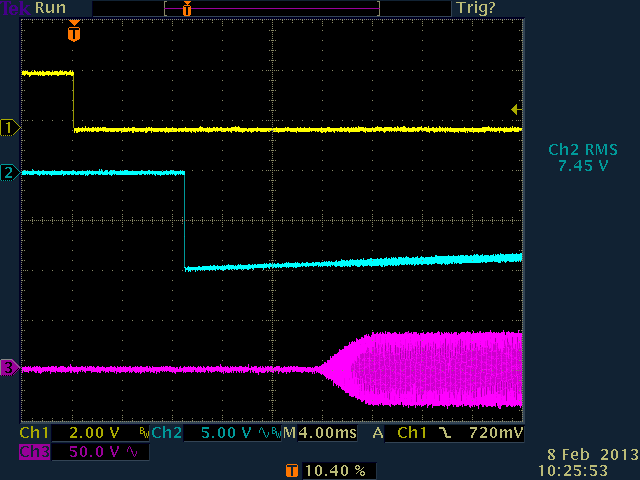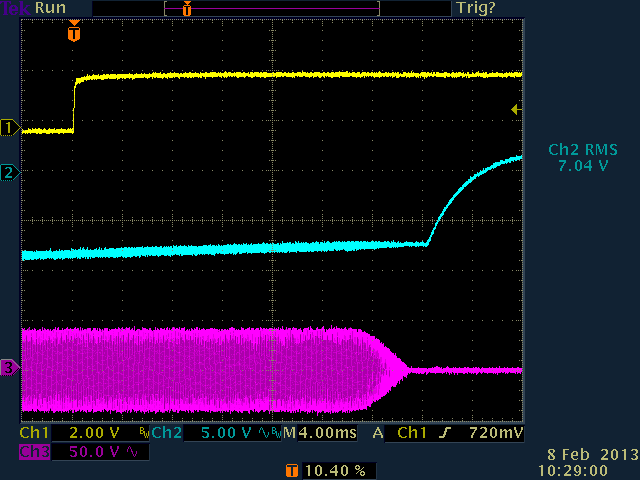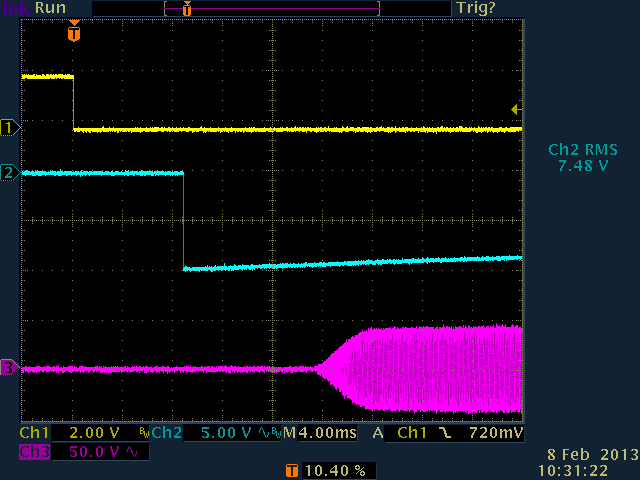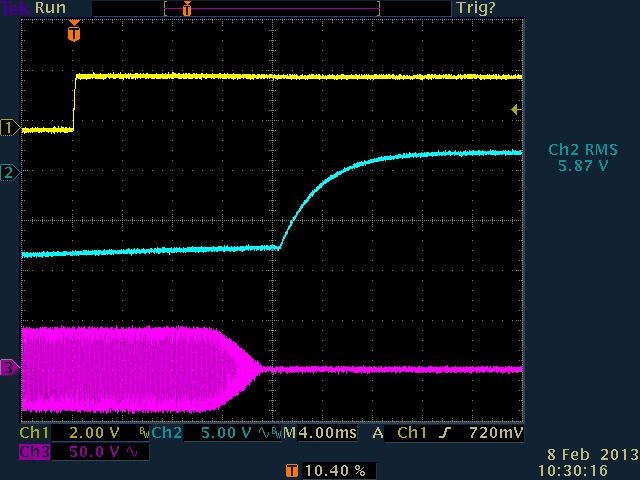TEN-TEC EAGLE CW KEYING
(Screen Shots courtesy of Dave Fentem, KW4M)
The following screen shots show the Ten-Tec Eagle's CW keying characteristics.
Each screen shot shows 3 curves:
- (Top):.......The output from the key(er)
- (Middle):...The voltage of the AMP KEY line
- (Bottom):..The actual RF Signal
1A. Internal Keyer: RX to TX Transition
The first screen shot begins with the Eagle in RX mode.
The yellow line represents the output from the Keyer.
The first "dit" begins on the left where the signal switches from high to low ("T").
The long yellow line represents [part of] the first dit.
- About 9 ms after receiving an active signal from the keyer, the AMP-KEY line (blue line) switches to low, which switches the amplifier's T/R relay to TX .
- NOTE: trace 2 (AMP-KEY) was inadvertantly set to AC coupling on the scope, hence the rising baseline indicaive of a charging circuit. In reality the signal had a solid switch to ground or an open.
- 17ms after the first dit was keyed (8ms after the AMP-KEY was triggered), the RF begins to transmit, with a rise time of about 6ms.
1B. Internal Keyer: TX to RX Transition
(This is a continuation of the signal shown above in 1A.)
- At "T" on this screen shot, the dit completes and the keyer's line switches high again.
- The AMP-KEY line continues low, keeping the Amplifier's T/R relay in TX for another 29mS.
- The RF continues transmitting, then falling off in about 6ms, completing about 26mS after the keyer completed the dit.
- Therefore the AMP-KEY line is held in about 3ms after the RF stops transmitting.
2A. External Keyer: RX to TX Transition
This time an external keyer was used through the AUX-1 line, instead of the Eagle's own built-in keyer.
It appears to be identical to screen shot 1A above (using the internal keyer).
2B. External Keyer: TX to RX Transition
- Again the dit completes at "T", and the keyer line (AUX-1) goes positive.
- The AMP-KEY line remains keyed for another 17 ms. This is 12ms shorter than in 1B above.
- RF completes after 16ms, again with a 6ms decay time.
- Here the AMP-KEY remained keyed only 1ms longer than RF presence, barely enough to prevent hot switching.
DISCUSSION:
- Although all timing will result in a clean transmission of the first dit - assuming the amplifier's relay pulls in fast enough, there is a difference in the transition from TX to RX when using the internal keyer or using an external keyer.
- The AMP-KEY line seems to be delayed about 9ms, which indicates it is a relay switching; this means the amp's relay only has about 8ms to switch to TX - fast enough for a vacuum relay but much too slow for an open-frame relay.





























